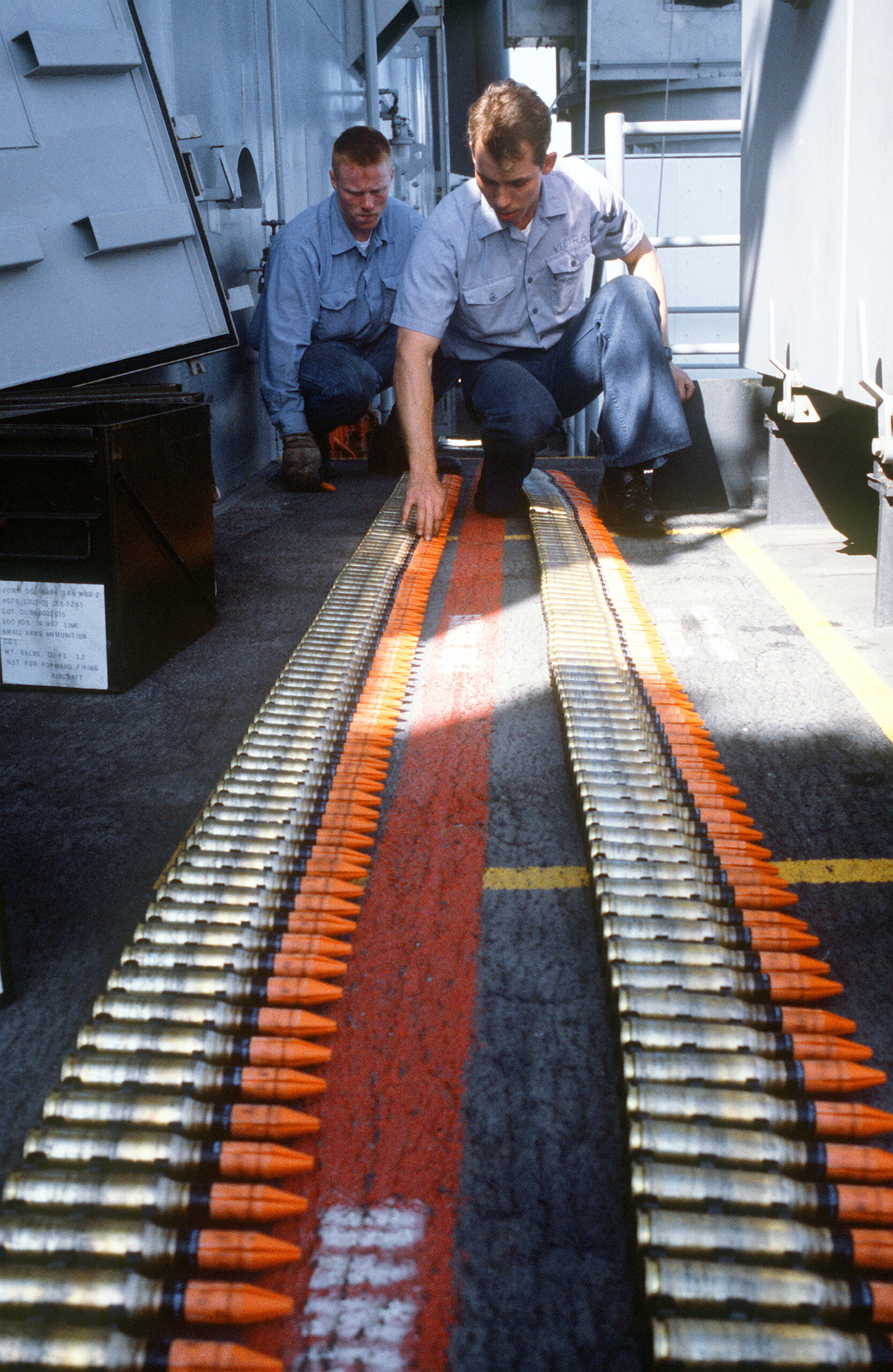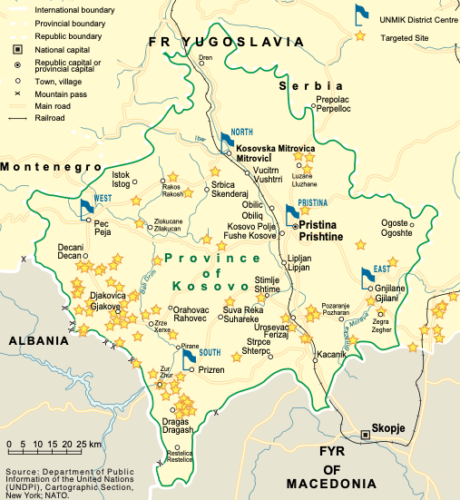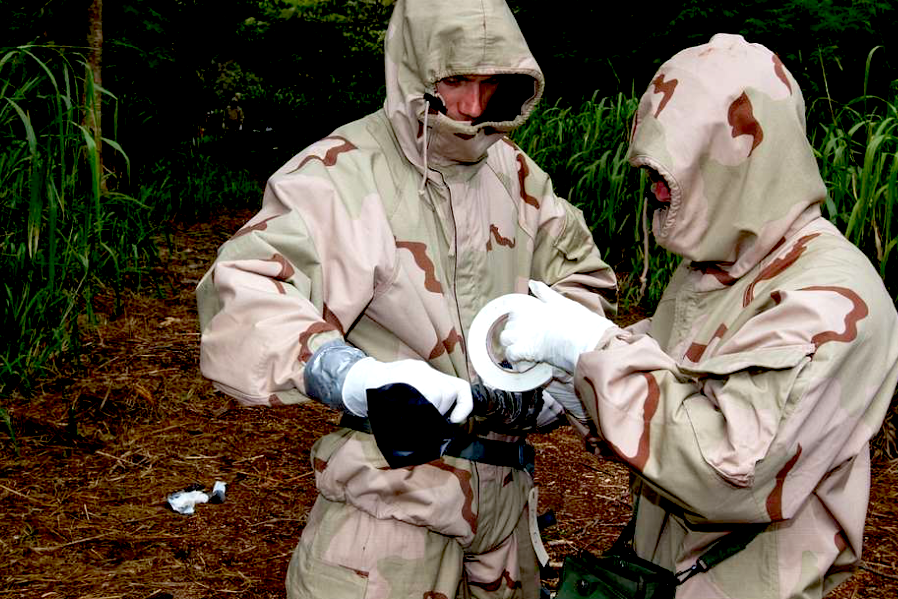Click here to sign the People's Proclamation and send it to everyone you know.
Source:Consortium News
Using Poison in Ukraine’s Depleted Hope of Victory
Britain’s decision to send depleted uranium rounds to Kiev represents more than a dangerous escalation in the West’s proxy war with a nuclear-armed power, writes Elizabeth Vos.

U.K. Armed Forces Minister James Heappey, left, with Secretary of State for Defence Ben Wallace in September 2022. (Simon Dawson / No 10 Downing Street)
By Elizabeth Vos
Special to Consortium News
 Depleted uranium shells have been sent to Ukraine, as confirmed by U.K. Armed Forces Minister James Heappey last week. Britain announced last month that it would send the munitions for use with Challenger 2 tanks, a move that immediately escalated nuclear tensions with Russia, with President Vladimir Putin threatening to place tactical nuclear weapons in Belarus just days later.
Depleted uranium shells have been sent to Ukraine, as confirmed by U.K. Armed Forces Minister James Heappey last week. Britain announced last month that it would send the munitions for use with Challenger 2 tanks, a move that immediately escalated nuclear tensions with Russia, with President Vladimir Putin threatening to place tactical nuclear weapons in Belarus just days later.
The U.K. move comes amid indications that Kiev is increasingly desperate, to the point of being willing to risk scorching the earth it is fighting for.
Over the last few months documents emerging as part of the so-called Pentagon leak allegedly posted online by U.S. National Guardsman Jack Teixera have shown Ukrainian forces are faring far worsethan previously reported by corporate media. As reported by Consortium News, the leaked documents “show the long-planned Ukrainian offensive will fail miserably.”
That the conflict is not going well for Ukraine came as little surprise to those who had been following the story outside of the legacy press echo chamber. However, Britain’s decision to send depleted uranium rounds to Ukraine represents more than a dangerous escalation in the West’s proxy war with a nuclear-armed power.
It is an example of Ukraine’s willingness to target the ethnic Russian population in eastern Ukraine and poison the land it is attempting to retain. Depleted uranium will have effects not only on Russian fighters but also on the civilian population for years to come.

Ukrainian troops in the Donbass region, March 2015. (OSCE Special Monitoring Mission to Ukraine, CC BY 2.0, Wikimedia Commons)
Radio host Randy Credico, who visited Donbass, recently told Consortium News that residents of that region already live in daily fear of U.S.-made missiles used by Ukraine to target civilians and the emergency services that come to help them: now they are to face the additional prospect of depleted uranium shells, which would not simply kill civilians now, but has the potential to poison future generations.
Russia intervened in Ukraine after eight years of war by Kiev against the ethnic Russians in the east who declared independence from Ukraine after the U.S.-backed 2014 coup.
The U.S. and British corporate media appear to dismiss concerns of Russian nuclear escalation in response to the use of depleted uranium rounds, and the official line in the West is that such weapons represent a low environmental risk.
The Sordid History of Its Use

U.S. sailors checking rounds of depleted uranium aboard the battleship USS Missouri in 1987. (Public domain, Wikimedia Commons)
However, there are compelling reasons to question the official stance. Depleted uranium rounds were used by U.S. forces in both Iraq wars, as well as in the Balkans in the 1990s.
Depleted uranium munitions are heavier than lead and are typically used to pierce the armor of tanks. On impact the metal shears, burns and vaporizes. This process produces toxic radioactive dust. A 2001 report focusing on the health impacts of depleted uranium on U.S. veterans of the Gulf War published by The Nation explains that:
“D.U. is highly toxic and, according to the Encyclopedia of Occupational Health and Safety, can cause lung cancer, bone cancer and kidney disease… Scientists point out that D.U. becomes much more dangerous when it burns. When fired, it combusts on impact. As much as 70 percent of the material is released as a radioactive and highly toxic dust that can be inhaled or ingested and then trapped in the lungs or kidneys. ‘This is when it becomes most dangerous,” says Arjun Makhijani, president of the Institute for Energy and Environmental Research. “It becomes a powder in the air that can irradiate you.”

Sites identified by U.N. Environmental Programme as targets for ordinance containing depleted uranium during NATO 1999 bombing of former Yugoslavia. (UNEP 2001 report “Depleted Uranium in Kosovo, Post-Conflict Environmental Assessment)
A 1999 report by The Guardian related the sentiments of scientists speaking in regards to bombing Kosovo with depleted uranium: “One single particle of depleted uranium lodged in the lymph node can devastate the entire immune system.”
Former U.N. weapons inspector Scott Ritter commented on the news of depleted uranium rounds being sent to Ukraine by citing increases in leukemia where it had previously been used in Kosovo as well as increases in birth defects and cancer in Iraq following the wars there.
He argues that the U.S. suppresses the health effects of depleted uranium “because we don’t want to take ownership for what we have done.”
In John Pilger’s film documenting Iraq after the first Gulf War, Paying the Price: Killing the Children of Iraq, he spoke with doctors in Basra where they reported a 10-fold increase in cancer deaths. Pilger also spoke with an Iraqi pediatrician who described an influx of congenital deformities never seen before the war.
In the case of the second Iraq War, the most striking reported effects of depleted uranium and other toxic substances were seen in Fallujah, where U.S. forces bombed mercilessly in 2004.
The rise in birth defects in Iraq have been called “catastrophic,” and The Guardian went so far as to publish a piece in 2014 that accused the World Health Organization of covering up the “nuclear nightmare” left behind in Fallujah by the U.S. and U.K.

U.S. soldiers dispose of a simulated depleted uranium round during training IN 2018 on the island of Oahu in Hawaii. (U.S. Army National Gurd/Rory Featherston)
Others have compared the city’s health crisis with that following the U.S. nuclear attack on Hiroshima.
The specific role of depleted uranium rounds in the sharply increased rate of cancer and serious birth defects remains controversial, but the accounts of doctors on the ground in Fallujah who have documented such birth defects, cancers, and other health problems are staggering.
Is this the future faced by generations of ethnic Russians in Ukraine?
When Ukraine is already set to lose, if slowly, on the battlefield, what is to be gained by taking out a few more Russian tanks if it permanently renders the land a danger to its inhabitants, permeated with toxic dust particles of radioactive heavy metal?
How can this decision be viewed as anything but a spiteful admission that that land is being lost, and that “salting” it is a final act of malice against ethnic Russians in Donbass?
The use of depleted uranium munitions in Ukraine amounts to a last-gasp of desperation and an attempt to contaminate territory Kiev knows it will not regain, for such weapons would not be supplied by Britain and used by Ukraine on land they were confident they would recapture.
Elizabeth Vos is a freelance journalist and contributor to Consortium News. She co-hosts CN Live!
No comments:
Post a Comment